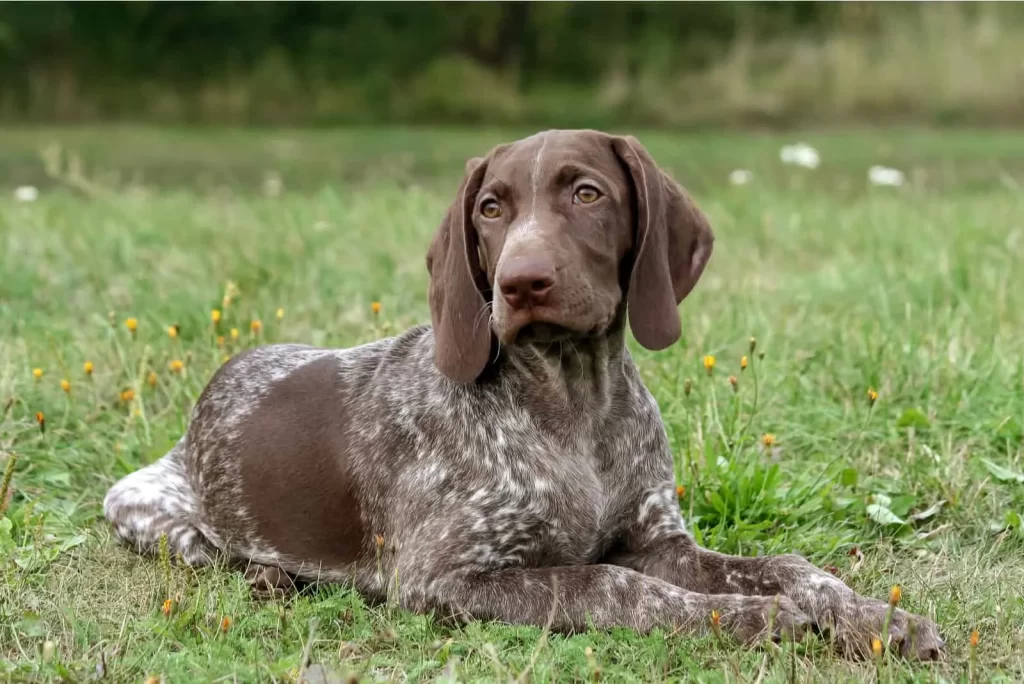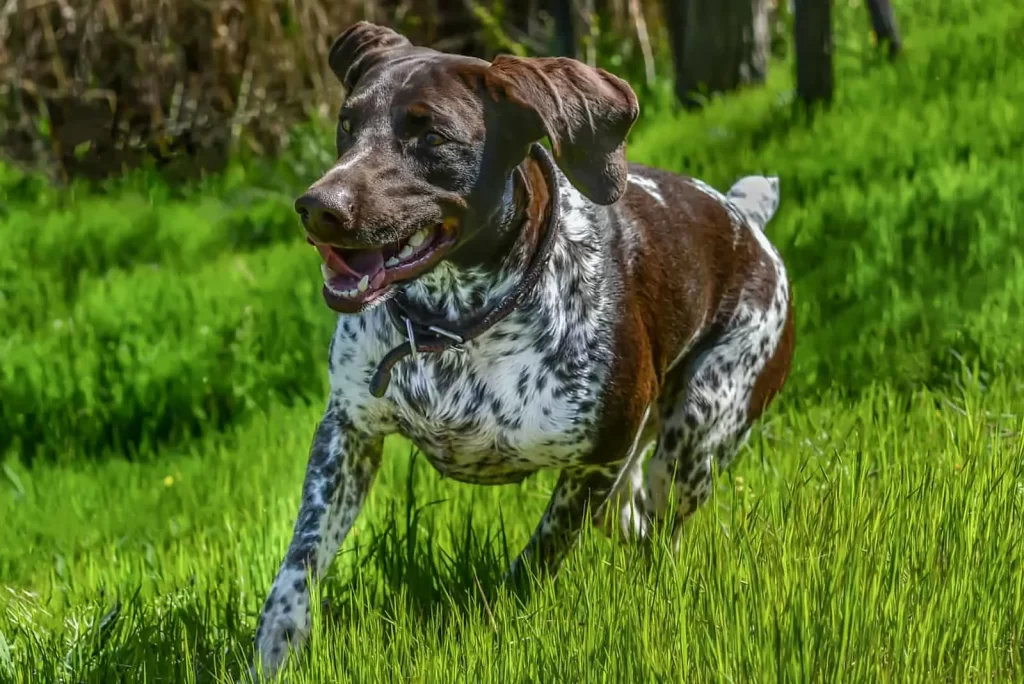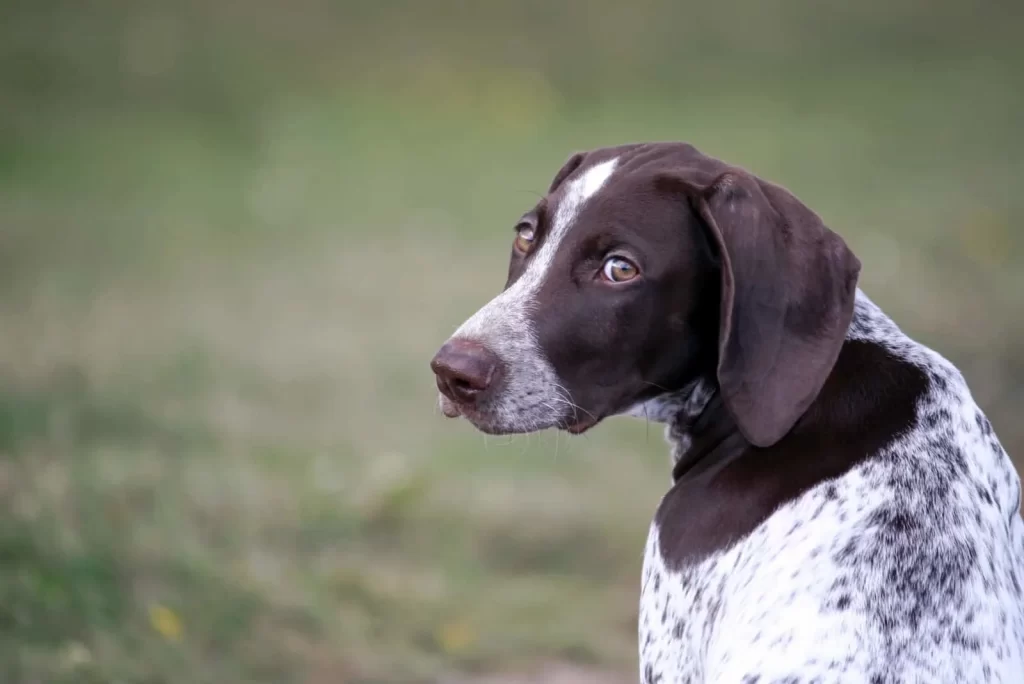German Shorthaired Pointer training guide
Welcome to our comprehensive training guide for German Shorthaired Pointers (GSPs)! Whether you’re a first-time GSP owner or looking to enhance your training methods, this article will provide you with the knowledge and insights you need to have a well-trained and disciplined GSP.
Training a GSP requires a tailored approach that takes into account their unique characteristics and needs. Throughout this guide, we will explore effective techniques and tips to help your GSP excel in obedience and agility. From puppy training to advanced skills, we’ve got you covered.
Some of our latest products...
-
犬用バンダナ
Liverpool FC Dog Bandana
$ 13.19 – $ 16.12 米ドル オプションを選択 この商品には複数のバリエーションがあります。 オプションは商品ページから選択できます -
犬用バンダナ
Manchester City Dog Bandana
$ 13.19 – $ 16.12 米ドル オプションを選択 この商品には複数のバリエーションがあります。 オプションは商品ページから選択できます -
犬用バンダナ
Manchester United Dog Bandana
$ 13.19 – $ 16.12 米ドル オプションを選択 この商品には複数のバリエーションがあります。 オプションは商品ページから選択できます -
Key Takeaways:
- Understanding the nature and characteristics of your GSP is essential for successful training.
- Early socialization and housebreaking are crucial for GSP puppies.
- Building a strong foundation of obedience commands is essential for all GSPs.
- Advanced training techniques can help tap into your GSP’s natural athleticism.
- Addressing behavioral issues requires patience and effective training strategies.
Understanding the German Shorthaired Pointer
Before diving into ジャーマン・ショートヘアード・ポインター training techniques, it’s important to have a comprehensive understanding of this remarkable breed. By gaining insight into their history, temperament, and distinctive traits, you can develop a training approach that caters to their specific needs and abilities.
Breed History
German Shorthaired Pointers, commonly referred to as GSPs, have a rich heritage that dates back to the 19th century. Initially bred in Germany, they were created as versatile hunting dogs capable of tracking game on both land and water. GSPs were selectively bred from a combination of Spanish Pointers, English Pointers, and various German hunting breeds, resulting in a highly adaptable and intelligent canine companion.
Temperament and Personality
GSPs are known for their friendly and outgoing nature. They thrive on human companionship and are exceptionally loyal to their families. With their high energy levels and natural curiosity, they require mental and physical stimulation to prevent boredom and undesirable behaviors. GSPs are intelligent, eager to please, and quick to learn, making them an excellent choice for training and various canine sports.
Distinctive Traits
German Shorthaired Pointers possess several traits that influence their training requirements. They have a strong prey drive and instinctual hunting skills, which must be channeled appropriately to prevent destructive behavior. Their boundless energy, combined with a keen sense of smell and excellent athletic ability, makes them well-suited for activities such as agility, tracking, and field trials. However, GSPs can also be sensitive and require positive reinforcement to thrive during training sessions.
“GSPs are intelligent, eager to please, and quick to learn, making them an excellent choice for training and various canine sports.”
By understanding the German Shorthaired Pointer’s breed history, temperament, and unique traits, you can tailor your training approach to suit their individual needs. This deeper understanding will lay the foundation for a successful training journey, enabling you to mold your GSP into a well-behaved and disciplined companion.
Puppy Training for German Shorthaired Pointers
Training a German Shorthaired Pointer (GSP) puppy requires a unique approach to ensure their growth into a well-behaved and obedient adult dog. In this section, we will discuss essential tips and techniques for successfully training your GSP puppy. By focusing on early socialization, housebreaking, and basic obedience commands, you can lay a solid foundation for their future training endeavors.
早期社会化の重要性
Early socialization plays a vital role in shaping a GSP puppy’s behavior and temperament. Introduce your puppy to various people, animals, and environments to help them become well-adjusted and friendly adults. Regularly expose your puppy to new experiences and positively reinforce good behavior. This will help prevent fear or aggression issues as they mature.
Housebreaking Techniques
Housebreaking is an essential aspect of puppy training. Establish a consistent routine for your GSP puppy’s feeding, playtime, and bathroom breaks. Take them outside frequently, especially after meals or naps, and reward them with praise or treats when they eliminate in the appropriate area. Be patient and consistent during the housebreaking process, as accidents are to be expected but can be gradually reduced through training.
Pro tip: Use a crate or confined space to assist with housebreaking. Dogs naturally avoid soiling their sleeping area, making a crate an effective tool for teaching bladder control and keeping your puppy safe when unsupervised.
Basic Obedience Commands
Teaching your GSP puppy basic obedience commands sets the groundwork for their overall training. Start with simple commands like “sit,” “stay,” and “come.” Use positive reinforcement techniques such as rewards and praise to motivate your puppy. Consistency and repetition are key when training your GSP puppy, so aim for short, frequent training sessions throughout the day.
- Begin with one command at a time, using clear, concise verbal cues and hand signals.
- Always reward your puppy immediately and enthusiastically when they obey a command.
- Gradually increase the difficulty of the commands as your puppy becomes more proficient.
- Consistency is crucial, so ensure everyone in the household uses the same commands and training methods.
Remember, training a GSP puppy requires patience, consistency, and positive reinforcement. With proper socialization, housebreaking techniques, and basic obedience training, you can set your GSP puppy up for a lifetime of success and happiness.
Obedience Training for GSPs
Building a strong foundation of obedience is crucial for any German Shorthaired Pointer (GSP). By training your GSP to respond to essential obedience commands, you’ll establish a harmonious relationship and ensure their safety in various situations.
Here are some essential obedience commands to focus on:
- Sit: Teaching your GSP to sit on command is the first step in obedience training. Start by using treats as a reward and gradually phase them out as your GSP becomes more proficient at sitting.
- Stay: The “stay” command is vital for keeping your GSP safe and under control, especially in potentially dangerous situations. Begin by practicing short stays and gradually increase the duration as your GSP becomes more comfortable.
- Recall: Training your GSP to come when called is essential for their safety and your peace of mind. Use a positive and enthusiastic tone to encourage your GSP to return to you. Reward them generously when they respond promptly.
- Heel: Teaching your GSP to walk calmly by your side is crucial for walks and outings. Use treats and positive reinforcement to encourage your GSP to maintain a proper heel position.
Positive reinforcement is an effective training method for GSPs. Use treats, praise, and play as rewards to reinforce desired behavior. GSPs respond well to positive reinforcement and will be more motivated to learn and obey.
“Consistency and patience are key when training your German Shorthaired Pointer. Celebrate their successes and be patient with them as they learn. With time and dedication, your GSP will become a well-mannered and obedient companion.” – Experienced GSP Trainer
While training your GSP, you may encounter some common obedience challenges. Here are a few tips to address them:
- For GSPs prone to pulling on the leash, consider using a harness or head halter to gain better control during walks.
- If your GSP becomes easily distracted during training sessions, choose a quiet and familiar environment to minimize distractions.
- Consistency is key when training your GSP. Establish a regular training schedule and stick to it, providing short and frequent sessions to maintain their focus.
Remember, every GSP is unique, and some may require more time and patience during obedience training. Tailor your training methods to suit your GSP’s individual needs and temperament.
By incorporating these obedience training tips into your GSP’s routine, you’ll foster good behavior and cultivate a strong bond based on trust and respect. A well-trained GSP is a happy and well-adjusted companion, ready to tackle any adventure with you.
Advanced Training: From Agility to Hunting
German Shorthaired Pointers (GSPs) are renowned for their agility and versatility. In this section, we will explore advanced training techniques that will allow you to further develop your GSP’s skills in agility, hunting, and other specialized activities. Whether you’re looking to compete in dog sports or simply enhance your GSP’s natural instincts, these tips and insights will help you take their training to the next level.
アジリティトレーニング
Agility training is a fantastic way to challenge your GSP both physically and mentally. By navigating through obstacle courses, your dog can improve their coordination, speed, and problem-solving abilities. Incorporate tunnels, jumps, weave poles, and A-frames into their training sessions to build their confidence and overall athleticism. Remember to reward your GSP for their achievements to reinforce positive behavior and encourage continued progress.
Hunting Training
GSPs have a strong instinct for hunting and can excel in various hunting activities. To develop their hunting skills, start with basic scent training. Introduce them to different scents, such as game birds or targets, and work on their ability to track, locate, and retrieve. Gradually increase the complexity of the tasks, incorporating realistic hunting scenarios to simulate real-life hunting experiences. Seek the guidance of experienced hunters or professional trainers to ensure the safety and ethical aspects of hunting training.
Training Tip: Always prioritize safety during agility and hunting training sessions. Ensure that the equipment and environment are safe for your GSP and provide proper supervision to prevent accidents or injuries.
Training your GSP in advanced activities like agility and hunting not only taps into their natural abilities but also provides mental and physical stimulation. These activities allow your dog to channel their energy positively and develop a stronger bond with you as their handler. Remember to be patient, consistent, and supportive throughout the training process, as advanced activities may take time for your GSP to master.
| Benefits of Agility Training | Benefits of Hunting Training |
|---|---|
|
|
Working with Behavioral Issues
German Shorthaired Pointers, like any dog breed, may exhibit behavioral issues that require additional attention. It is essential to understand these common problems, such as separation anxiety, excessive barking, and leash reactivity, in order to address them effectively.
If your GSP displays separation anxiety, it can be distressing for both you and your dog. To alleviate this issue, gradually introduce your GSP to being alone and offer interactive toys or puzzles to keep them occupied. Additionally, practicing short departures and gradually increasing the duration can help your dog feel more comfortable when you’re away.
Excessive barking can also be a challenge with GSPs. To tackle this behavior, identify the reasons behind the barking, whether it’s due to boredom, fear, or attention-seeking. By addressing the underlying cause and providing appropriate mental and physical stimulation, you can reduce the instances of excessive barking.
Leash reactivity is another behavior that can occur in GSPs. This may manifest as lunging, barking, or pulling when on a leash. To manage leash reactivity, it’s important to create positive associations with other dogs and stimuli. Gradual desensitization techniques, combined with reward-based training, can help your GSP become more comfortable and responsive while on a leash.
Remember, addressing behavioral issues requires patience and consistency. Always use positive reinforcement techniques, rewarding good behavior to encourage desired outcomes. Seek guidance from a professional dog trainer or behaviorist if you require further assistance in addressing specific behavioral challenges with your German Shorthaired Pointer.
| Behavioral Issue | Training Tips |
|---|---|
| 分離不安 | – Gradually introduce your GSP to being alone – Provide interactive toys or puzzles – Practice short departures and gradually increase duration |
| Excessive Barking | – Identify the underlying cause of barking – Provide appropriate mental and physical stimulation – Address boredom, fear, or attention-seeking behavior |
| Leash Reactivity | – Create positive associations with other dogs and stimuli – Use gradual desensitization techniques – Reward good behavior and avoid punishment |
Training Tools and Equipment for GSPs
When it comes to training your German Shorthaired Pointer (GSP), having the right tools and equipment can make a world of difference. From crates to leashes and harnesses to training treats, these essentials can help ensure a safe and effective training experience for your furry companion.
“The right training tools can greatly aid in your GSP’s training progress.”
Let’s take a closer look at some of the must-have training tools and equipment for GSP training:
Crates
A crate can be an invaluable tool for GSP training, providing a safe and cozy space for your dog. Use a crate to aid in housebreaking, as well as teaching your GSP to stay calm and secure when you’re not around. Select a crate that is appropriately sized for your GSP, allowing enough room for them to stand up, turn around, and lie down comfortably.
Leashes and Harnesses
Leashes and harnesses are essential for controlling your GSP during walks and training sessions. Opt for a sturdy leash made from durable materials, such as nylon or leather. Consider using a harness instead of a collar, especially if your GSP tends to pull or has a sensitive neck. A harness distributes the pulling force more evenly to prevent discomfort or injury.
Training Treats
Training treats are a fantastic motivator for your GSP during training sessions. Choose small, bite-sized treats that are tasty and appealing to your dog. Look for treats that are specifically designed for training purposes, as they are often soft and easy to break into small pieces. Remember to use treats sparingly to prevent overfeeding and adjust their portion sizes accordingly.
Training Tips for GSP Owners
As a German Shorthaired Pointer (GSP) owner, you play a crucial role in shaping your dog’s behavior and abilities. To enhance your training journey and develop a strong bond with your GSP, consider the following tips and tricks:
- Establish a Consistent Routine: GSPs thrive on routine, so create a structured training schedule that includes regular exercise, feeding times, and training sessions. Consistency will help your GSP understand expectations and reinforce positive behaviors.
- Set Realistic Training Goals: Start with small, achievable training goals, and gradually increase the difficulty as your GSP progresses. Setting realistic goals will ensure both you and your dog stay motivated and experience continuous improvement.
- Use Positive Reinforcement: Reinforce desired behaviors with positive reinforcement, such as treats, praise, and affection. GSPs respond well to rewards, creating a positive association with training and encouraging them to repeat the behavior.
- Be Patient and Consistent: Training takes time, and every dog learns at their own pace. Stay patient, consistent, and avoid getting frustrated. Your GSP will pick up on your energy and respond better to a calm and positive training environment.
- Socialize Your GSP: Proper socialization is essential for GSPs to develop good manners and interact positively with other animals and people. Expose your GSP to various environments, experiences, and individuals from a young age to build their confidence and prevent behavioral issues.
- Provide Mental Stimulation: GSPs are intelligent and energetic dogs that thrive on mental stimulation. Incorporate puzzle toys, obedience exercises, and interactive games into their daily routine to keep their minds engaged and prevent boredom-related problems.
- Seek Professional Guidance: If you encounter specific training challenges or require advanced guidance, consider consulting a professional dog trainer who has experience working with GSPs. They can provide personalized strategies to address your dog’s unique needs.
Remember, training your GSP is an ongoing process, and building a strong foundation requires time, effort, and dedication. By implementing these training tips and being a patient, consistent, and loving owner, you can shape your GSP into a well-behaved and happy companion.
“Training a GSP is like nurturing a diamond in the rough. With the right techniques and dedication, you can reveal their incredible potential and enjoy a lifelong partnership filled with joy and shared adventures.” – Anonymous GSP Owner
Common Challenges in GSP Training
| Challenge | 解決 |
|---|---|
| Stubbornness | Use positive reinforcement, consistency, and find high-value rewards to motivate your GSP. |
| Excessive Energy | Ensure your GSP receives ample exercise and mental stimulation to channel their energy into positive outlets. |
| 分離不安 | Gradually desensitize your GSP to your departures and create a calm environment with comforting toys or puzzles. |
| Leash Reactivity | Consider professional help to address leash reactivity, focusing on positive reinforcement and counter-conditioning. |
結論
In conclusion, training your German Shorthaired Pointer requires patience, consistency, and a tailored approach. By understanding their breed traits, providing early socialization, and using positive reinforcement techniques, you can unlock your GSP’s full potential. With their intelligence and eagerness to please, your GSP can excel in obedience, agility, and specialized activities.
Remember that training is an ongoing process, and it’s important to continue challenging and stimulating your GSP’s mind. This will help prevent boredom and ensure a well-rounded and happy dog. By investing time and effort into training, you can form a deep bond with your well-trained German Shorthaired Pointer, creating a harmonious and fulfilling relationship.
So, whether you’re a first-time GSP owner or an experienced trainer, embrace the journey of training your German Shorthaired Pointer. Enjoy the process of watching them grow, learn, and achieve new milestones. With dedication, consistency, and a lot of love, your GSP will become a confident and obedient companion that brings joy and fulfillment to your life.
FAQ
Can German Shorthaired Pointers be difficult to train?
German Shorthaired Pointers are intelligent and eager to please, making them highly trainable. However, their high energy levels and independent nature can present some challenges. Consistency, positive reinforcement, and plenty of exercise are key to successfully training a GSP.
How often should I train my German Shorthaired Pointer?
Training sessions should be regular but short to keep your GSP engaged and focused. Aim for multiple training sessions throughout the day, each lasting around 10-15 minutes. This will prevent your dog from becoming overwhelmed and maintain their interest in learning.
What are some effective training techniques for GSPs?
Positive reinforcement is a highly effective training technique for German Shorthaired Pointers. Rewarding desired behaviors with treats, praise, and play encourages them to repeat those behaviors. Additionally, clicker training and incorporating mental stimulation activities such as puzzle toys can help keep your GSP mentally sharp and engaged.
How important is socialization for my GSP?
Socialization is crucial for German Shorthaired Pointers to ensure they develop into well-rounded and well-behaved dogs. Expose your GSP to various people, animals, environments, and experiences from a young age. This will help them become more confident and comfortable in different situations.
Should I enroll my GSP in obedience classes?
Obedience classes can be highly beneficial for both you and your German Shorthaired Pointer. These classes provide structured training environments, professional guidance, and opportunities for your GSP to socialize with other dogs. They can also help you learn effective training techniques and address any specific behaviors or challenges you may be facing with your GSP.
What should I do if my GSP displays behavioral issues?
If your GSP displays behavioral issues such as aggression, anxiety, or excessive barking, it’s important to seek professional help from a certified dog trainer or behaviorist. They can assess the underlying causes of the behavior and provide guidance on implementing appropriate training and behavior modification techniques.
How long does it take to train a German Shorthaired Pointer?
The time it takes to train a German Shorthaired Pointer can vary depending on the dog’s individual temperament, previous training experiences, and the consistency of the training approach. It’s important to remember that training is an ongoing process, and patience and consistency are key. Continuously reinforce good behaviors and address any challenges that arise.
Can I use punishment-based training methods for my GSP?
It is generally recommended to avoid punishment-based training methods with German Shorthaired Pointers. These methods can lead to fear or aggression and damage the trust between you and your GSP. Positive reinforcement and reward-based training techniques are more effective and promote a healthy, trusting relationship with your dog.








